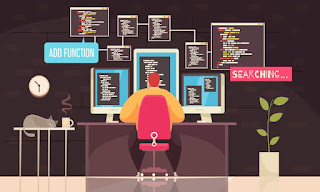How Computer Vision & AI are Transforming the Energy Sector
The rapidly evolving energy sector is driving business leaders to adopt new technologies and automation to maintain a competitive edge. The electric power industry is expanding at an unprecedented rate, focusing on building a more reliable and resilient grid. However, infrastructure maintenance remains one of the biggest challenges for the utility industry. With increasing risks and the global push towards zero carbon emissions, utility companies are actively seeking innovative solutions to evaluate risks and develop sustainable energy strategies. While new energy sources are being explored, enhancing existing energy systems is equally critical.
Computer vision is revolutionizing the way electrical energy systems are maintained and optimized. In this article, we will explore how next-generation AI vision technology is enhancing operational efficiency and safety in the electric power industry.
A Glance at the Energy Sector
Before delving into the applications of computer vision in the energy sector, it is important to understand its significance. Electricity plays a pivotal role in the energy sector. The process starts with electricity generation at power plants, utilizing resources to transmit power over long distances through power lines. The four main stakeholders in an electricity production system include utility companies, regulators, grid operators, and end users.
Global market forces are reshaping the utility landscape, driving the need for disruptive technologies and robust transformations in industry business models. Computer vision, combined with AI, is emerging as a game-changer in streamlining operations and optimizing efficiency in energy infrastructure.
The Key Role of Computer Vision in the Energy Sector
Computer vision enables automated visual inspections of critical energy infrastructure. This plays a significant role in early detection of potential damage, safety hazards, and malfunctions. By optimizing maintenance schedules and improving operational efficiency, it helps in reducing downtime costs while ensuring seamless power distribution.
Real-Time Monitoring of Infrastructure
Aerial drones equipped with computer vision-enabled cameras monitor vast areas of power lines, wind turbine blades, and solar farms in real time. These systems identify faults such as loose connections, structural damage, and corrosion, enabling proactive maintenance. By ensuring timely inspections, infrastructure reliability is significantly improved.
Drone Inspections
Drones fitted with high-resolution cameras and computer vision technology are revolutionizing infrastructure inspections. They survey power lines, solar farms, and transmission towers by capturing high-quality video and image data. AI-powered vision models, such as YOLO11, enable object detection and instance segmentation to identify potential issues.
Traditional manual inspections are often risky, costly, and prone to errors. In contrast, AI-driven vision systems automate the inspection process, reducing human exposure to hazardous tasks and improving overall safety standards.
Safety Compliance & Anomaly Detection
AI-powered computer vision systems enhance workplace safety by monitoring workers in real-time. These systems ensure that employees wear appropriate safety gear and adhere to designated work zones. Additionally, visual data analysis helps detect anomalies in equipment performance, prompting immediate investigation and preventive maintenance.
Smart Grid Surveillance
Real-time power flow surveillance is crucial yet challenging. The integration of computer vision models simplifies smart grid monitoring by efficiently detecting vulnerabilities. When combined with infrared technology, vision AI models analyze heat emissions from objects, capturing real-time thermal images.
Using advanced imaging and thermal cameras, computer vision detects hotspots and monitors utility poles for sudden temperature spikes. The system promptly triggers alerts, enabling maintenance teams to take immediate corrective action and prevent potential failures.
Fire & Smoke Detection
AI-driven vision systems analyze video data from security cameras to detect fire and smoke in real-time. Early detection allows for immediate alerts, enabling security personnel to mitigate potential disasters before they escalate. This capability is crucial in protecting infrastructure and preventing power outages.
Automated Intrusion Detection
Computer vision AI seamlessly identifies unauthorized access to restricted zones. By enhancing security measures, the technology aids in theft prevention and detection of illegal activities within surveillance premises. Real-time alerts ensure prompt action against intrusions, safeguarding critical assets.
Major Benefits of Using Computer Vision in the Energy Sector
1. Minimal Maintenance Costs
Computer vision facilitates early issue detection, enabling predictive maintenance that significantly reduces costly repairs and unplanned downtime.
2. Advanced Operational Efficiency
AI-powered visual inspections automate routine checks, decreasing the time and labor required for traditional inspection methods. This automation enhances overall productivity and cost-effectiveness.
3. Improved Safety
Real-time monitoring of critical infrastructure and workplace safety practices reduces risks and prevents accidents. By identifying hazards before they escalate, computer vision helps in creating a safer work environment.
4. Data Analysis
Computer vision AI ensures precise and consistent data analysis, allowing for improved decision-making in energy infrastructure management. Accurate data insights enable companies to optimize maintenance schedules and enhance efficiency.
5. Data-Driven Decision-Making
The extensive data gathered from vision AI models can be integrated with historical records to enable informed decision-making. This data-driven approach supports better resource allocation and infrastructure planning.
Conclusion
The adoption of computer vision AI is gaining significant momentum in the energy sector, transforming traditional maintenance and monitoring processes. By leveraging machine learning models to collect and analyze data, businesses can achieve greater efficiency and improved safety. As an AI development company, Nextbrain offers cutting-edge AI-powered software solutions that are widely utilized by industry innovators.
Nextbrain’s comprehensive AI vision system is designed to streamline energy sector operations, covering the full AI vision lifecycle. From infrastructure monitoring to security enhancements, our AI-powered solutions are tailored to meet diverse industry needs.
Are you interested in learning more about the impact of computer vision and AI on the energy sector? Contact the Nextbrain team today to explore our advanced AI solutions and discover how they can revolutionize your energy operations.
.png)
%20(1).jpg)


Comments
Post a Comment